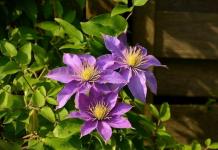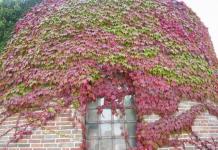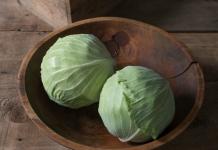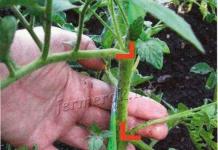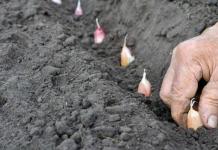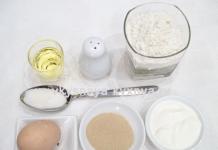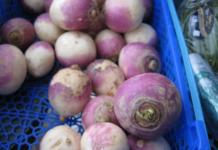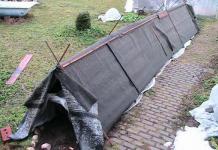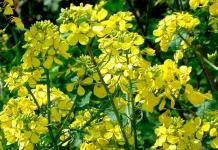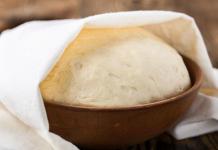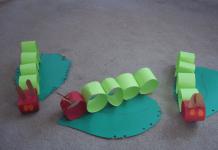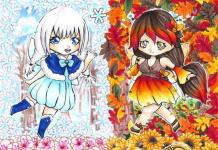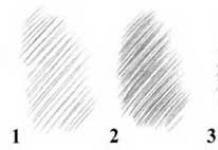Many people dream of a large, beautiful garden. After all, the fruits grown and harvested with your own hands cannot be compared with anything. And how beautiful the garden is when the trees are in bloom! Alas, sometimes you have to fight for the health of the garden.
Diseases of a pear and the fight against them are what almost every gardener has to deal with. If you do not find an ailment, do not cure it in time, the garden may perish. Therefore, we will take a closer look at what pear diseases are and their treatment.
It is worth noting that the diseases of apple trees and pears are in many ways similar, therefore the information given in the article is also suitable for the treatment of apple trees.

Fungal diseases
Let's look at the most common fungal diseases.

Scab
Fungus - the pathogen spreads through the trees incredibly quickly. The scab affects the leaves of pears and their petioles. The disease is most dangerous in warm, humid weather. Symptoms of the disease appear in the spring after bud break. Yellow spots appear on the fruits, through which the pulp shines a little. Over time, they acquire a brown tint and velvety texture. The leaves turn red, turn black, eventually fall off.
If the scab affects the fruits at an early stage of development, they grow abnormally and do not reach normal size. Sometimes, at an early stage, the sepals suffer from the disease, and from them - the fruits and leaves. This often happens if the garden is densely planted, there is no normal air movement between the trees.

The fungus "hibernates" in fallen leaves. In the spring, bumps can be seen on them, spores mature there. During budding and flowering of pears, spores are thrown away, trees become infected. The higher the humidity, the faster the disease progresses. If the spring is prolonged, the buds open slowly, the risk of scab disease increases.
Treatment
What to do to protect the garden from disease? Fallen leaves must be removed and burned. The crowns of trees should be thinned out by pruning, and the trunks should be dug up. In the fall (after leaf fall), it is important to treat the trees with a 5% urea solution, and the trunks with a 7% solution. Before bud break and at the beginning of it - in the green cone phase, it is recommended to carry out "blue spraying" with 3% Bordeaux liquid

If you failed to prevent the disease, it will have to be treated with the same Bordeaux liquid, but at a concentration of 1%. Or use another mixture: azophos (30g), copper oxychloride (40g), Skor (2ml), Bayleton (6g) per 10 liters of water. AND For environmental reasons, it is better to treat scab with drugs such as Alirin-B, Gamair, Fitosporin. Alirin-B and Gamair successfully cope with the disease, only liquid soap, a special adhesive (Liposam) or a product containing an adhesive, such as Aquadon-micro, Narcissus, must be added to them.
When the pears have faded, you need to spray again. During the wet season, the tree can be processed up to 6 times, with intervals of 2-3 weeks.
Fruit rot (moniliosis)
No less dangerous disease. Moniliosis is extremely damaging. It is also a fungal disease. The fungus persists in last year's fruits, which take on a mummified appearance. In the spring, infested pears become covered with white spots due to the growth of mycelium inside. Fruits coarse, may fall off. Many of them remain on the branches. The mycelium quickly captures the tree.

The disease is most pronounced in the second half of summer, especially in humid hot weather. Small brown specks appear on the fruit, which become larger and may even spread to the entire fruit. White pads form on top. There, spores will form that will infect other parts of the tree.
The fungus appears especially quickly in places of damage to the peel.
Treatment and prevention
Prevention of the disease begins with the collection of fallen fruits, leaves, branches that need to be burned.
In the summer, you need to collect the fruits in a timely manner with special care so as not to damage them.
Treatment is the same as for scab.

Phylostictosis (brown leaf spot)
Another disease is phyllostictosis. Its manifestation can be seen as early as July. The first manifestations of the disease are small brown dots on the leaves. Over time, they turn black, covered with spore spots. The color of the spots is brown, the edges are pronounced. Sometimes the leaves turn black completely.
The fungus hibernates in fallen leaves. High air humidity contributes to its rapid spread. Trees that have been treated with too strong chemicals in the past, leading to a chemical burn of the leaves, are especially at risk.

The black leaves make it easy to distinguish the spot from other diseases. But its treatment is practically the same as for scab. The same means and spraying scheme will be effective.
Powdery mildew
The defeat begins with young shoots, sometimes inflorescences and fruits suffer. The leaves stop developing and fall off. A young developing shoot, affected by an illness, also stops development, deforms, and often dies. In case of illness, a white bloom appears on the inflorescences, the flowers crumble, and those that remain on the branches no longer give ovaries.
Powdery mildew loves low humidity and warm weather.
If the above description matches the situation in your garden, you need to immediately start fighting the disease. But how to deal with powdery mildew?

It is necessary to immediately get rid of infected shoots; in the phase of extension, the buds must be treated with fungicides. And after two weeks, it is necessary to repeat the treatment. Fungicides are used: "Topaz", "Topsin-M", "Bayleton", "Sulfarid", as well as a solution of colloidal sulfur.
Septoria pear disease, white spot
Pears often suffer from white spot (septoria). This is manifested in the appearance of rounded light spots with a dark border on the leaves. You can notice the signs after flowering. In the middle of such a spot there are pycnidia with spores. The pathogen easily survives the winter, and infects the leaves in the spring.
Prevention is important. It is necessary to remove fallen leaves, fruits and twigs in time, as well as dig up the near-stem circles. If you are growing pears in an area with high humidity, it is best to choose varieties that are resistant to white spot. In spring and autumn, it is worth thinning the crown.

If the disease has already captured the plantings, you need to treat the trees with fungicides. The first time pears are sprayed before budding, the second - when blooming, and the third - after flowering. In advanced cases, it is necessary to repeat the treatment during the summer.
The pear is crying
What if the pear starts to cry? Perhaps the reason is gommosis (gum flow). The disease usually attacks a tree that has suffered during the winter or has already been infected with a fungus, as well as those pears that grow on acidic, too moist soils, or are satiated with fertilizers.
The disease is characterized by the release of gum on branches and trunks. This phenomenon has a bad effect on the general condition of the pear, it greatly weakens the tree and can lead to its death.

In order to save the tree, the main thing is to heal its damage.
The "crying" area must be cleaned and wiped with a solution of copper sulfate 1%, and then several times (every 10 minutes) rub with sorrel leaves. After - apply garden var to the wounds.
Black cancer
Black pear cancer develops over several years. The bark of the tree is affected. It all starts with small cracks, which become more and more, after which the crust bursts and cambium begins to peep through it (photo below). The edges of the cracks are covered with brown spots.
Treatment for black cancer is simple enough. The affected bark is cut off. After that, it is necessary to treat the pear with copper sulfate and cover the wounds with a mixture of clay and mullein.

Disease-resistant varieties: August dew, Samaryanka. In order to secure the pear garden from black cancer in advance, these varieties should be planted.
The pear dies
Most often, seedlings die due to improper planting. The tree simply cannot take root if the normal conditions for this are not created.
To make it easier for winter-hardy pears to take root, they should be planted in the fall, until mid-October. The distance between trees depends on the variety (usually 3-5 m). Planting holes are dug with a diameter of 1 m and a depth of half a meter. Take care of the quality of the soil with which you fill the pit. Make sure that the root collar of the seedling does not go deep when planting. The trunk circle needs to be mulched.
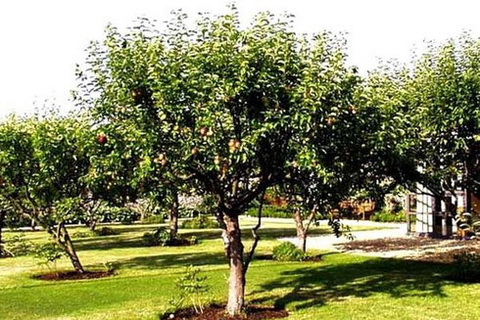
It is also bad to plant trees in areas where groundwater is close to the surface. Timely pruning of the seedling is also important, if it is not carried out, then the branches will grow incorrectly. The tree may break in the future.
Proper care is also required. Young pear trees are watered more abundantly than other trees. It is also important to bear in mind that pear seedlings are difficult to transplant. They freeze easily and can get sick.
The pear has broken
It is not always possible to protect the pear from wind and snow that can harm the tree. If a young pear in your area is broken, you can save it. It is necessary to cut the seedling 3 cm below the place of the break, thoroughly clean the cut, disinfect and cover it with garden pitch.

If a pear breaks in autumn or winter, then new shoots will begin to grow on it in the summer. They need to be cut off, leaving the most powerful of them at the top. He needs to be given an upright position by tying it to a peg. This will be the new trunk of the pear.
The pear dries up
If the pear suddenly begins to dry out, perhaps the reason is improper care. The most obvious problem with these symptoms is insufficient watering in dry weather. The opposite situation is also true - waterlogging of the roots. The reason for this is too frequent watering or the close occurrence of groundwater.
It is also worth asking the question, didn’t you have a mole on your site? In this case, you need to water the pear well and start fighting it. Noise makers, digging in nets, special traps will help here.

The pear can dry out due to infection with fungal spores. For example, when pruning branches, non-disinfected tools were used. In this case, you should fight the disease itself and continue to avoid such a mistake.
For the same reason, a bacterial burn occurs, which has similar symptoms. Pear leaves begin to dry from the tips, and then the whole plate curls and dries up. In this case, with the beginning of the growing season, repeated treatments with Bordeaux liquid are carried out, however, before processing the pear, sanitary pruning is carried out.
Also look for pests in the tree. They can cause the pear to dry out and must be dealt with accordingly. If all else fails and the pear dries anyway, it is considered too weak for normal growth.
The pear does not grow well
It happens that a planted pear does not grow for some reason. The problem may be in the damping out of the root collar. For the same reason, the pear often does not grow, and the leaves turn yellow prematurely. Young plants are most susceptible to this phenomenon, especially when they were fed too much with fertilizers.

A lot of snow accumulates under the trees, which falls on the thawed soil. The neck shrinks. Fighting damping is almost impossible, but you can pay utmost attention to choosing a place for planting.
Also, the problem may be in the label, which some gardeners forget to remove from the seedling when planting. A rope with a label on the growing tree pinched the trunk and stopped the movement of the juices.
The next reason why the pear does not grow may be damage to the seedling by the beetle larva. It is important to take a good look at the plant and the soil under it and, if a pest is found, take measures to destroy it.
How to treat wood from diseases
In order for the pear to grow and develop normally, the treatment of diseases and their prevention must be carried out in a timely manner.
For the first time, processing is carried out in the spring, when the temperature has reached + 5ᵒС. It is necessary to spray both the trunk, and the crown, and the near-trunk circle. All damage should be inspected; pests and fungus often hibernate in them. Before spraying, you need to mechanically clean the trunk of lichen.

It is better to spray in 3 stages: in March, in April before flowering, in May after flowering.
It is also important to prune on time.
In the spring, processing is most often carried out with copper sulfate. Also, depending on the situation, you can use the appropriate fungicides, urea or biological products.
In the fall, before the beginning of leaf fall, prophylactic spraying with 5-7% urea solution is carried out. The fallen leaves are removed and the trunks are dug up. They also carry out whitewashing with special paint.
Bordeaux pear liquid
Bordeaux liquid is very popular when processing pears from diseases and pests. It contains lime, copper sulfate and water. For the treatment of fruit trees, including pears, before bud break, it is suggested to use 3% Bordeaux mixture (liquid), during the growing season, you can use only 1% Bordeaux mixture.

Bordeaux mixture is prepared in plastic or enameled containers. For a 1% solution in 1 liter of warm water, dissolve 100 g of copper sulfate. Separately from it, 100-150 g of lime is dissolved in 5 liters of water. The solutions are filtered, and then the solution of copper sulfate is brought to a volume of 5 liters and poured into the lime mixture, stirring.
Verified by the scientist agronomist Alexander Zharavin


